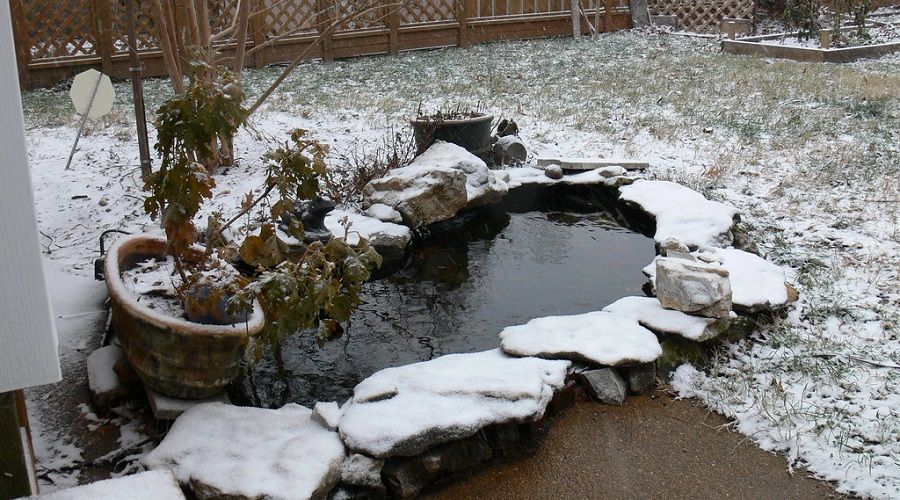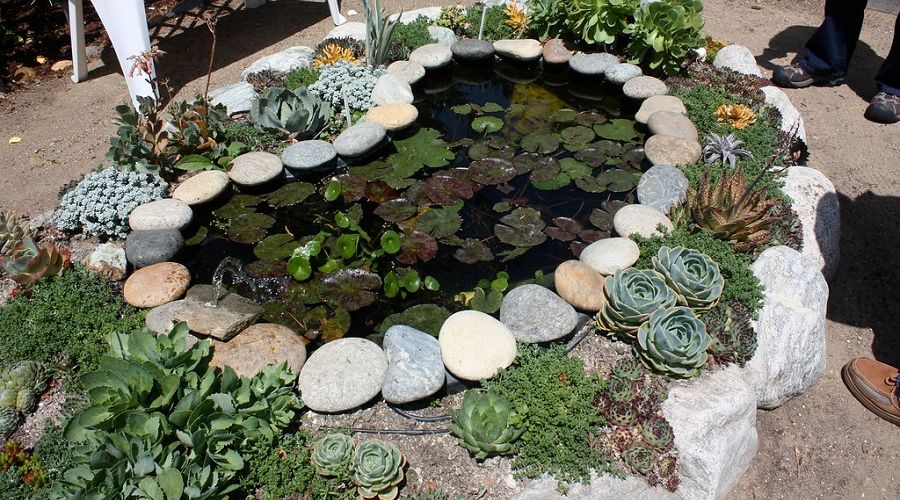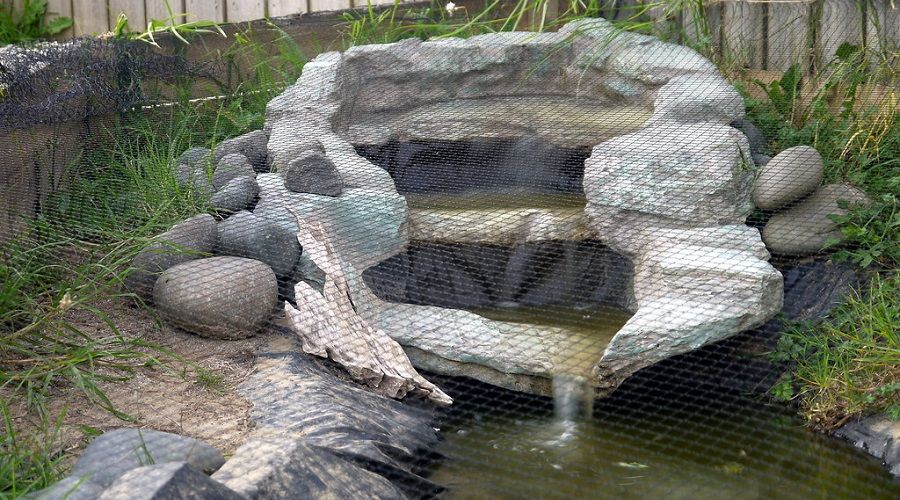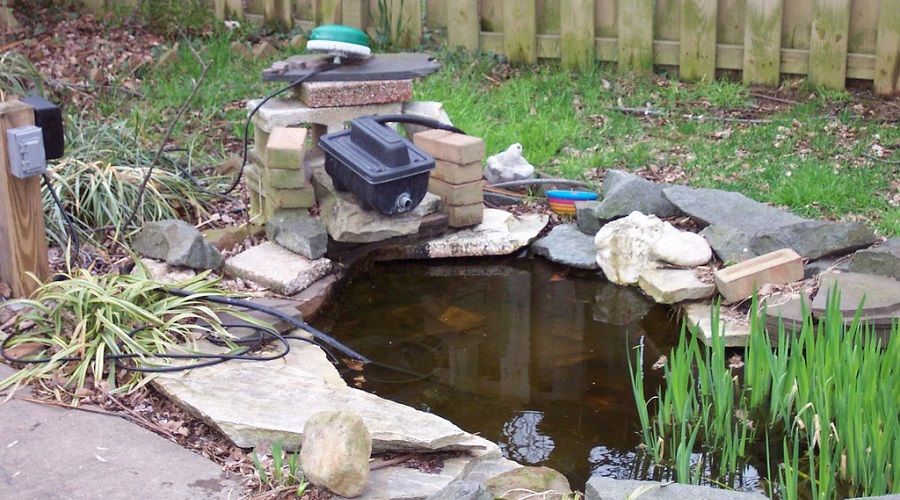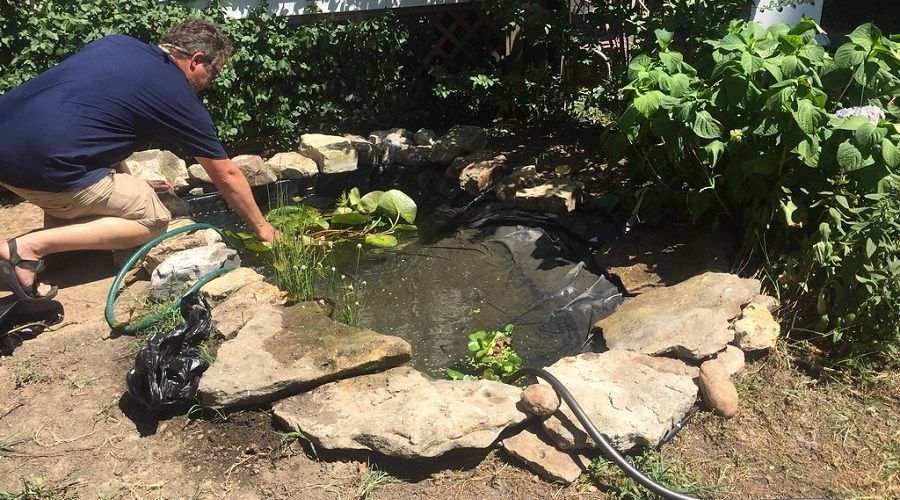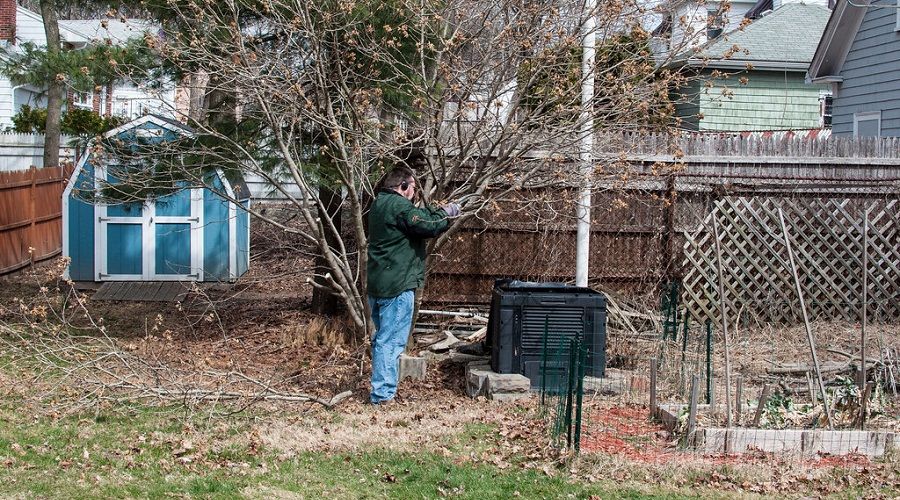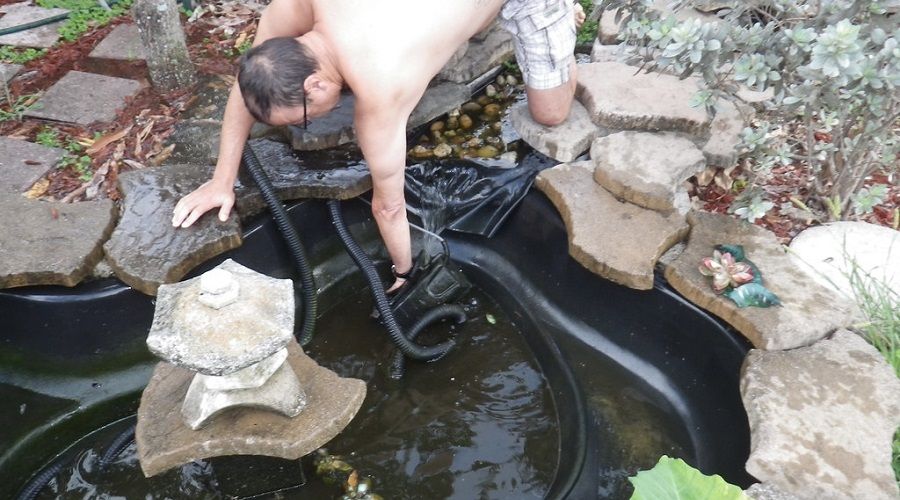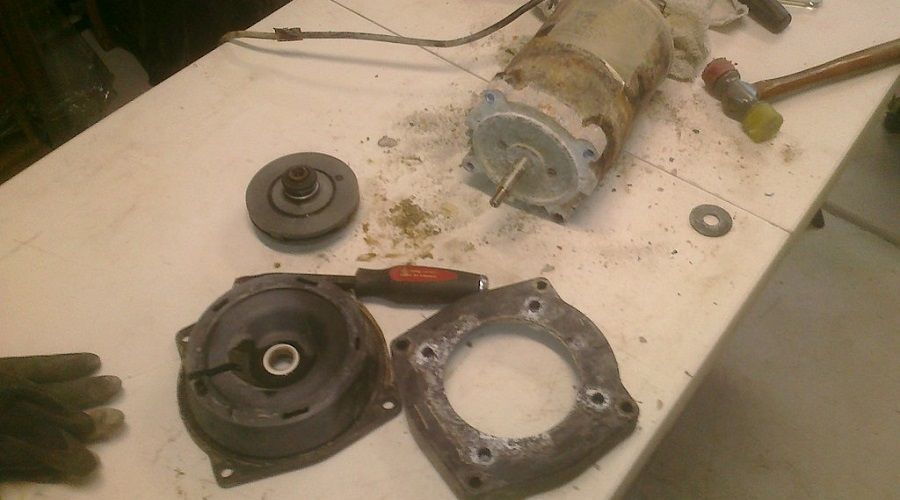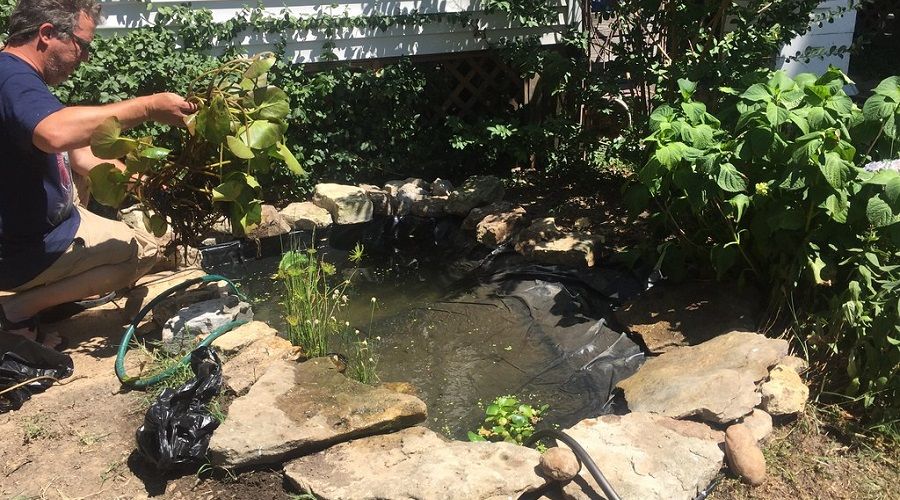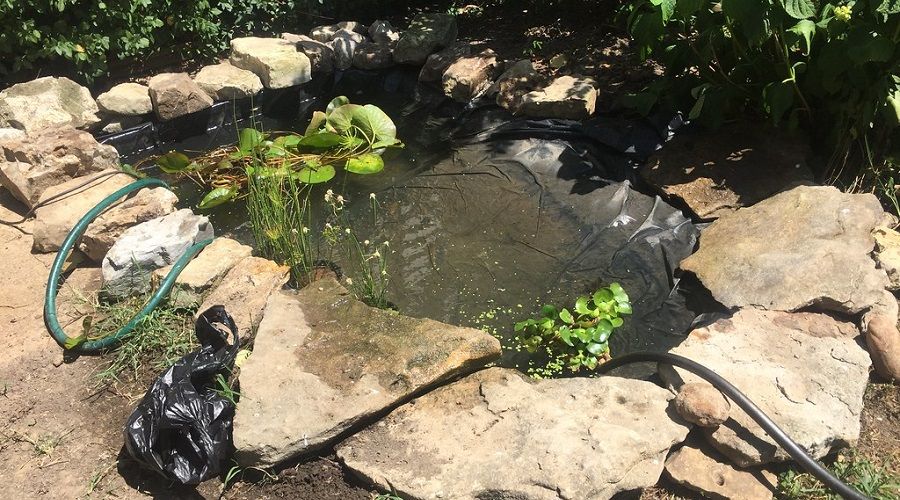Now that winter is on its way, pond owners need to start prepping this garden water feature for the upcoming freezing temperatures.
If you don’t take precautions for the approaching frost, your fish, tropical plants, and overall pond investment are at risk. Allowing your pond to go through the cold unprepared essentially signs you up for tons of stress, both in the middle of winter months and while you’re opening it up again for spring.
Save yourself the hassle and keep reading to learn how to winterize your backyard pond!
What You’ll Need to Winterize Pond
Before you can start your winterization, you have to gather various winter-specific items first.
Winter Prep Solutions
These winter prep solutions deal more with different liquid and granular formulas that affect water quality and fish feed:
- Fish vitamin drops
-
Coldwater fish food
- Also known as fall fish food, this has less protein and higher wheat germ content for easier fish digestion during winter.
- Coldwater bacteria
Equipment
Much of the backyard pond winterization process will be easier with the following equipment:
- Water thermometer
- Protective pond net
- Long-handle pond skimmer
- Pruning shears
-
Pond vacuum
- If you don’t have this, a pond rake is a good manual alternative.
- Circulating pump
- Floating pond heater
- Aquarium (optional)
A Step-By-Step Guide On How to Winterize Your Pond for Winter
Backyard pond winterization is an 11-step process that needs time and careful planning to ensure your pond is fully ready for winter's cold weather.
Step 1: Prepare fish for the winter
Image Credit: minicooper93402 via Creative Commons
As soon as autumn arrives, check your pond thermometer daily and feed your fish with special vitamin drops to strengthen them for the cold. When water temperatures drop below 70ºF, start using cold water fish food. Slowly cut back on fish feed as the water reaches 65ºF and stop feeding when the water is consistently below 48ºF. Even if your fish look hungry, feeding them at this water temperature is dangerous and makes it difficult to digest their food.
Pro-Tip: Gradually switch to cold water food by mixing it first with your spring and summer fish food. As the cold sets in, introduce more of the cold water food until your fish can safely consume it on its own. Always observe them five minutes after feeding to see how they react to the new food.
Step 2: Attach pond net
Image Credit: Yortw via Creative Commons
While preparing your fish for winter, you should also attach a protective net over your pond. It will catch any falling leaves and debris, getting rid of plenty of work during the clean-up process. Make sure to have this draped over the water before your trees start shedding autumn leaves.
Step 3: Partially drain your pond
Image Credit: Ken_Mayer via Creative Commons
When your trees are bare, and there’s no more risk of falling foliage, remove your net and partially drain your pond water, leaving it at least half-filled. It helps with winter clean-up, allows you to partially change your water, and makes it much easier to perform a deep clean. Just be sure you don’t empty it!
Step 4: Clear pond of leaves and debris
Image Credit: henskechristine via Creative Commons
Protective netting is wonderful but not perfect. Remove any fallen plant debris, floating plants like the water lettuce, and water hyacinths that got past your net using a long handle pond skimmer. If you don’t clear off all floating leaves and debris, this decay can release and accumulate toxic gases within your water and endanger your sensitive healthy fish.
Step 5: Prune and relocate foliage
Image Credit: Kristin 'Shoe' Shoemaker via Creative Commons
Since the growing season for most plants also stops near winter, you need to deal with your pond plants. Any tropical and annual plants need to be pruned and relocated indoors. For hardy perennials, trim it until right above where the maximum water level of your pond would be if it were full. If you’re unsure, you can follow this video: Prepping your pond plants for winter.
Step 6: Clean pond liner
Image Credit: osseous via Creative Commons
Even if you have the best pond liner on the market, you need to clean off all the dirt and grime accumulated from spring and summer. Clean as much sludge as you can with a vacuum or rake to minimize the possible build-up of harmful bacteria during the cold.
Pro-Tip: If the winter is too cold for your fish to overwinter outdoors, it’s best to bring them inside. Before bringing your fish indoors, prepare your aquarium for them while you start winterizing. Only transfer your fish when you’re sure the water quality meets their needs. Check out this video to learn more: Overwintering Your Pond Fish Indoors.
Step 7: Clean and remove pond filter and pump
Image Credit: AFresh1 via Creative Commons
Let's face it, the best pond pump in the world still needs regular cleaning! Gather your filter and pump for a thorough cleaning. After removing the gunk, you can return it to the water and keep it running or store it indoors. We recommend bringing them inside and replacing them with more winter-specific devices. To clean these properly, you can follow these in-depth videos: How to clean a pond pump and Deep Clean Of Pond Filter
Step 8: Refill your water
Image Credit: henskechristine via Creative Commons
After this deep clean, top up your water again. Although it’s tempting to leave it partially filled for the winter, doing this runs a higher chance of your water freezing and harming your fish. If using tap water, remember to check its balance first and dechlorinate it if needed before adding it to your pond.
Pro-tip: Watch out for ammonia. Ammonia is a sub-lethal fish toxin that’s most concentrated in winter and can build up from leftover decomposing matter in the water. Even after being deep cleaned, regularly test it for its ammonia concentration. If it ever reaches a concerning level, treat it immediately to keep your fish healthy and safe.
Step 9: Add cold water bacteria
Image Credit: henskechristine via Creative Commons
With a refreshed pond, it’s time to maintain your water’s quality and clarity for the frost using cold water bacteria. Simply follow its instructions before adding it to your water once its temperature stays below 50ºF. This healthy bacteria works its magic by keeping your water chemistry at optimal levels. Learn more with this video: Cold Water Beneficial Bacteria For Fall And Winter.
Step 10: Install floating circulating pump and pond heater equipment
Image Credit: virtusincertus via Creative Commons
To prevent the water from freezing and keep it oxygenated, install a circulating pump and floating pond heater / de-icer for the winter. These will cycle the water, maintain oxygen levels, and keep it warm during the cold temperatures to prevent pond ice. During installation, keep these items close to the surface. It allows your pump’s bubbles to release gas easily and prevents your water surface from developing ice on the surface.
Step 11: Reattach pond net
Image Credit: Rich Ogin via Creative Commons
Your net will be one of your winter best friends. Although there shouldn’t be any drastic tree foliage shedding as in autumn, have a net is a reassuring protective measure. This net will catch any possible debris before it hits the water and keeps your pond in good shape.
In Summary
If it’s your first time doing this, you probably already struggled with how to build a backyard fish pond earlier this year. After all that hassle, wouldn’t you want to protect it from the cold? It’s time to winterize your pond!
Pond maintenance and winterization seem tedious and time-consuming, but it’s worth it once you see your fish alive and thriving again in the spring.
We love hearing from you, so if you have any thoughts, questions, comments, and maybe even some of your own garden pond winterization tips, feel free to share them in the comments below!

